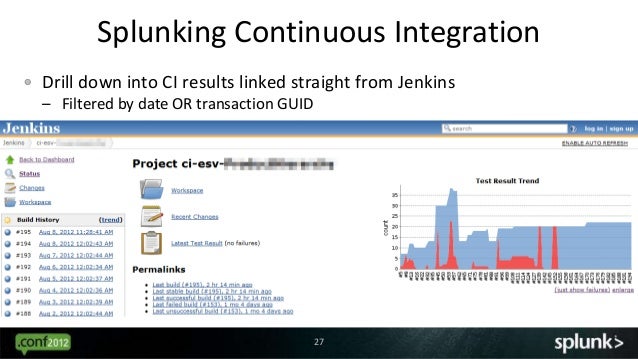
- Splunk .conf pricing manual#
- Splunk .conf pricing full#
- Splunk .conf pricing software#
Splunk .conf pricing software#
Dependency on human intervention: Automation testing requires human intervention for tasks like defining test scripts and setting up the test suite, while autonomous testing can independently generate and execute test cases, learn from test results, and adapt its testing strategies.īy understanding the differences between automation testing and autonomous testing, organizations can choose the right approach that aligns with their requirements and goals in software testing. It can generate test cases by examining the application, learning from previous test results, and updating tests based on changing system requirements. Intelligence: Autonomous testing leverages AI and ML techniques to enhance the testing process. 
Splunk .conf pricing manual#
Scope: Automation testing focuses on automating manual and repetitive tasks in software tests, such as test execution and test report generation.Employing test data to perform tests and provide test results as a report.Īutonomous testing differs from automation testing in several aspects:.
 Using automated testing tools to execute testing scripts automatically. autonomous testing: key differencesĪutomation testing is a software testing method that aims to reduce human intervention and improve the accuracy and efficiency of software testing. ( Automation is a key tool in delivering products faster, and more frequently in DevOps) Automation testing vs.
Using automated testing tools to execute testing scripts automatically. autonomous testing: key differencesĪutomation testing is a software testing method that aims to reduce human intervention and improve the accuracy and efficiency of software testing. ( Automation is a key tool in delivering products faster, and more frequently in DevOps) Automation testing vs. 
Therefore, in contrast to traditional software testing methods, autonomous testing can execute a large volume of test cases at once.Īutonomous testing not only enables accurate identification of failures by automatically identifying expected outcomes but also allows seamless integration of autonomous tests into continuous integration and continuous deployment pipelines. On the other hand, autonomous testing can automatically generate test cases by analyzing the system, generating data, and executing automatically without any human intervention.
Updating test cases according to system changes. However, most of these methods still depend on manual tasks such as: In automated testing, testers create test scripts that execute automatically using automated testing tools. When software applications became sophisticated, this process became a tedious task. Testers then manually executed those test cases and analyzed and produced results manually. Traditionally, software testing was a manual process where humans created test cases based on the system requirements. From manual testing to autonomous testing In addition, autonomous tests can learn from historical data and evolve. Splunk .conf pricing full#
From data creation to execution, autonomous tests can perform a full end-to-end test by working as an independent entity. What is autonomous testing?Īutonomous testing is an emerging technology that uses AI/ML to create and drive software testing without human intervention. This article aims to provide a comprehensive guide on autonomous testing tools, highlighting their benefits, and the top tools available. Artificial intelligence (AI) and machine learning (ML) advancements introduced a groundbreaking approach to software testing known as autonomous testing.

Software testing is a rapidly evolving landscape where automation has replaced traditional manual practices significantly in recent years.








 0 kommentar(er)
0 kommentar(er)
